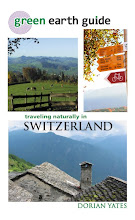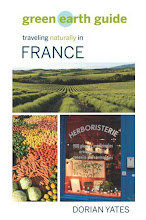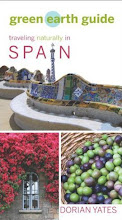
A good way to ruin a nice city is to try driving in it at rush hour, which is just what I had to do in Santiago. Between having a small inadequate map and hitting rush hour, I spent over an hour driving around congested Santiago trying to find the train station, which I had assumed, as had the rental car clerk, would be well signposted, but not so.
Once the car was returned (an adorable 2-door Citroen that got incredible mileage), I was able to hoof around Santiago and see the main sites, which were about the only part of Santiago I had not yet seen from the car. The cathedral sits on an impressive, massive Praza (the Galicians say Praza instead of Plaza) de Obradoiro where all “caminos” to Santiago converge. It was virtually empty on the February evening when I was there, but I could imagine it filled with throngs of all sorts of pilgrims in the warmer months. It was sort of thrilling to think of the thousands of pilgrims for centuries who have landed on that square.
I found a health food store and bought some fruit for my train journey back east and wandered around the city until it neared my 10:00pm train departure time.
The overnight train from Santiago to Madrid was possibly one of my most uncomfortable nights I have ever spent. I think the car I was in came out of some dead train-car storage facility by some mean-spirited train personnel. The seats were not designed to recline, nor did they have movable armrests so I was stuck with a hard-edged metal arm rest in the middle of the two seats so even though I was lucky enough not to have anyone sitting next to me I could not curl up and lay cross ways on the seats without metal objects jabbing me at every turn. This as a head’s up to travelers – it may be worth springing for the extra 50 euros for the berth if you are making that journey.















